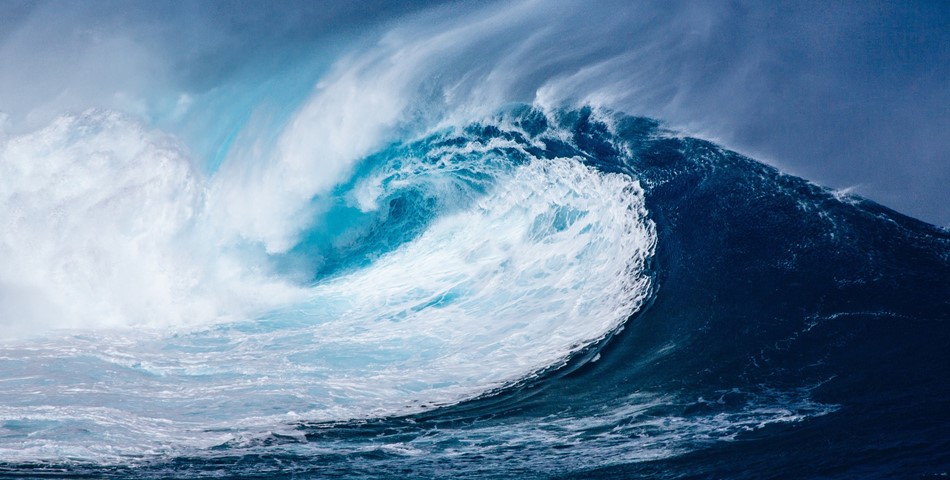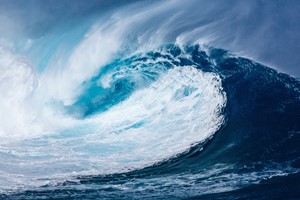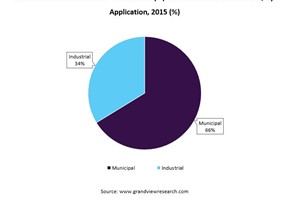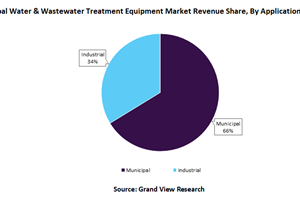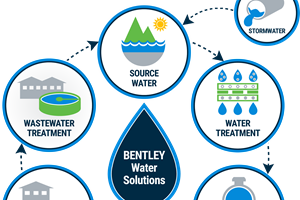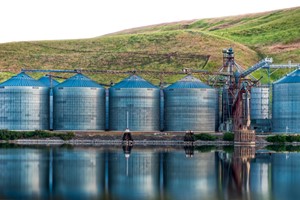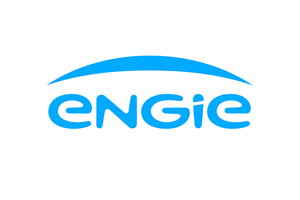Droughts continue to force water conservation efforts in communities throughout the United States and across the globe. To meet water demands, even during drought conditions, communities close to seawater are considering or turning to seawater desalination. Through this process, water sources such as the Pacific Ocean have been called “drought proof.”
The United States’ largest seawater desalination plant, the Claude “Bud” Lewis Carlsbad Desalination Plant in California, has been in operation for just over a year with a capacity of 50 million gallons per day (MGD). To turn ocean water into safe drinking water, water treatment facilities remove the dissolved salts prior to treatment with traditional chemicals. The two most common methods of desalination are reverse osmosis (RO) and distillation. The Carlsbad facility uses reverse osmosis for removing the high salt content of the ocean feed water. Reverse osmosis and distillation desalination plants are also being proposed in other coastal communities.
Drinking water from a desalination process is treated with typical chemicals for pH adjustment, corrosion control and disinfection downstream from the desalination process. There are several unique considerations because the desalination process removes most of the dissolved compounds. The high dissolved salt content in sea water makes it unsafe for drinking. Desalination removes the dissolved salts and minerals allowing for further treatment of the water. Reverse osmosis uses high pressure to move water through a semi-permeable membrane leaving salt and minerals behind in a more concentrated brine. Distillation heats the salt water to boiling, causing water evaporation while leaving behind the non-volatile salts. The evaporated water is condensed and collected. Both techniques remove dissolved solids, salts and minerals as well as other compounds and chemicals from the water.


The salt and other minerals left behind in the concentrate can clog RO membranes and hinder the distillation process by forming scale deposits. To combat scale deposit formation, antiscalants, often compounds with phosphate groups, are added to the feed water. Adding the scale control chemicals improves the RO membrane function over time. The antiscalant compounds may not be entirely removed during the RO or distillation process and can still persist in the final drinking water.
To ensure that any residual antiscalants in the water are at levels safe for consumers, the chemicals should be certified to NSF/ANSI 60: Drinking Water Treatment Chemicals – Health Effects. This certification not only verifies the safety of the chemical itself but also any possible contaminants in the chemical. Although most of the antiscalant is removed through the reverse osmosis or distillation process as it is not intended to be present in finished drinking water, NSF/ANSI 60 is conservative in its safety requirements and assumes some of the antiscalants are still present in the final, treated water. The assumptions about residual antiscalant in the drinking water depends on the type of chemical and which desalination process is used. Antiscalants are evaluated for safety based on the maximum use level in feed water, the percentage in the product and the amount to pass the RO membrane or volatize in the distillation unit. The lab test results are compared to the pass/fail criteria contained in NSF/ANSI 60 which are set by the U.S. EPA, Health Canada and third-party toxicology risk assessments. These safety evaluations cover acute and chronic exposures to chemicals.


Reverse osmosis and distillation processes remove not just the undesired salts but also any desired mineral content in the feed waters. The RO permeate and distillate waters have such low mineral content that the water needs to be softened prior to use. Softening chemicals are also covered by the scope of NSF/ANSI 60 to verify that they are not adding harmful contaminants into the water. Softening chemicals are added downstream from the RO or distillation process so they are evaluated against the maximum use level within the water with no additional assumptions.
The chemicals used as direct are not the only concern for drinking water safety. The treatment and transmission products and equipment used in a reverse osmosis or distillation process also need to be certified for safety. NSF/ANSI 61: Drinking Water System Components – Health Effects verifies that the treatment and transmission products used in any desalination process are not indirectly contributing chemicals at harmful levels into the drinking water. The products covered by NSF/ANSI 61 include the reverse osmosis membranes and pressure vessels, piping, fittings, valves, chemical generating and feeding systems, as well as any component in contact with the water. Utilizing NSF/ANSI 60 certified chemicals and NSF/ANSI 61 certified components when operating a desalination process provides the treatment facility the highest confidence that the drinking water produced is of the highest quality and safety.
David Nance
Business Unit Manager, Water Distribution and Recreational Water Products



